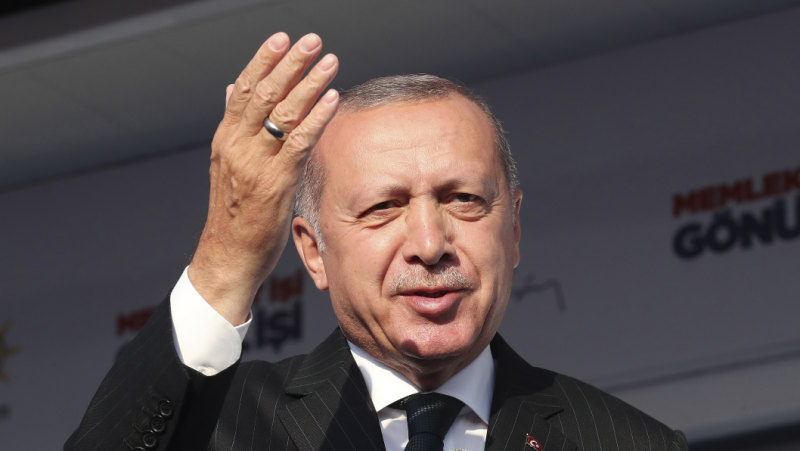President Erdogan Resets Turkey’s Course: The Role of the S-400 Issue
When I visited Turkey last year, it was clear in discussions in Istanbul with journalists and officials that President Erdogan was clearly on a path to break with the traditions of Ataturk and the secular state.
In a period where the global impact of the various strands of Islam are clearly providing significant global impact, the President of Turkey has focused on emphasizing the Islamic side of Turkey, not its secular tradition and its role as a leader in the Middle East shaping a more effective democratic path forward in a troubled region.
In place of Ataturk’s vision, we have the Erdogan vision of a partial restoration of the Ottoman Empire with an expanded role of Turkey as a leading Islamic state operating in Africa and the Middle East. He has also overseen the significant economic decline of Turkey which means that the focus on the restoration of Turkish “glory” is not going to be funded by a dynamic Turkish economy closely integrated with the West.
In a critical but insightful article by Alon Ben-Meir on Erdogan , the author hihglights the psedo-Ottoaman approach being followed by the President.
“With little or no opposition at home, Erdogan moved to promote his Ottoman penchant to establish military bases in Qatar and Somalia, and military ties with Tunisia.
Now he is scheming to build another military installation on the strategically located Sudanese Island of Suakin. Erdogan intends to utilize the island as a military outpost, as it had been during the Ottoman era. Egypt and Saudi Arabia believe that Erdogan’s military adventure will upset the regional balance of power, which is the recipe for instability and incessant violence.”
With regard to military policy, a key part of his effort is to build out the autonomy of Turkish industry and to do so at the expense of the quality of his forces. He used the “coup” to rip apart the Turkish Air Force and create a much less effective military force. In my discussions with journalists in Istanbul, the drive for arms independence was highlighted as a key issue and there was clear concern that collaborative programs with the West, such as the F-35 would unravel.
There was a discussion of the challenges the West played with regard to Erdogan because arms programs have been a key means whereby effective working relationships with Turkey have been maintained over the years. Indeed, one could note that without the collaborative working relationships of the professional military and collaborative defense industrial working relationships, NATO itself would be much less real and much less effective.
But Erdogan is acting is if his membership in NATO is a birthright which allows him significant room for maneuver to expand South and East. The time is fast approaching when he needs to learn that he has significantly less room for maneuver if he continues to stab the West in the back.
An excellent example of how Erdogan is operating is his recent exploitation of the horrific slaying of Muslims in New Zealand. During his current electoral campaign, he thought it acceptable to threaten the ANZAC community if they did not do whatever he thought was appropriate.
Ataturk was a brilliant Turkish military leader who defeated the allies in World War I when the attack was made on Turkey; he was respected because of his combat brilliance and because he went on to make Turkey a great nation. Erdogan who has no such pedigree seems to think that standing on the dead bodies of World War I soldiers and threatening their descendants will have no consequences.
He is playing fire as well with his nation’s security by clearly putting his country on the path to be booted out of the F-35 program.
Although the French defense minister recently commented that Germany could not buy the F-35 and still be part of Article V, what she missed is that for several key NATO partners, the F-35 is a key building block of deterrence of Russia.
These partners will not welcome a Turkey F-35 partner willing to compromise the technology by now turning to Russia for arms. It is not about equivalence; it is about commitment.
The Turks are part of the F-16 European community and as such joined F-35
With the strategic shift from the land wars to dealing with the Russians and other competitors, and the slow roll involvement in the land wars, the F-35 has come at a time when the US and allies are focusing on high end conflict
The F-35 is central to that but because it is not a classic fighter but a flying combat system we are leveraging it to connect to other warfighting assets like Aegis
The connected warfare piece is central to the F-35 And given what the Israelis have already demonstrated against the Russians in Syria, we clearly are not interested in an F-35 partner playing with the S-400 and seeking in any way to combine those capabilities on their own.
The Turks provide some key elements as part of the F-35 global enterprise for the airplane but we can of course shift from Turkey to suppliers elsewhere
But the problem is that Turkey seems to be throwing its fate in with the authoritarian powers — China and Russia — which is not a good sign and certainly will lead the US to deny them F-35s
This article was first published on Breaking Defense.

